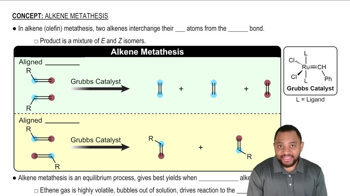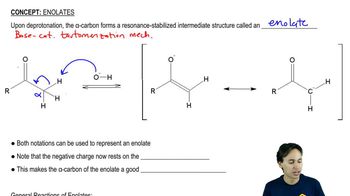Predict the major products of the following reactions, including stereochemistry where appropriate.
(k) cyclopentanol + H2SO4/heat
(l) product from (k) + OsO4/H2O2, then HIO4
(m) sodium ethoxide + 1-bromobutane
 Verified step by step guidance
Verified step by step guidance Verified video answer for a similar problem:
Verified video answer for a similar problem:



 3:50m
3:50mMaster General properties of syn vicinal dihydroxylation. with a bite sized video explanation from Johnny
Start learning